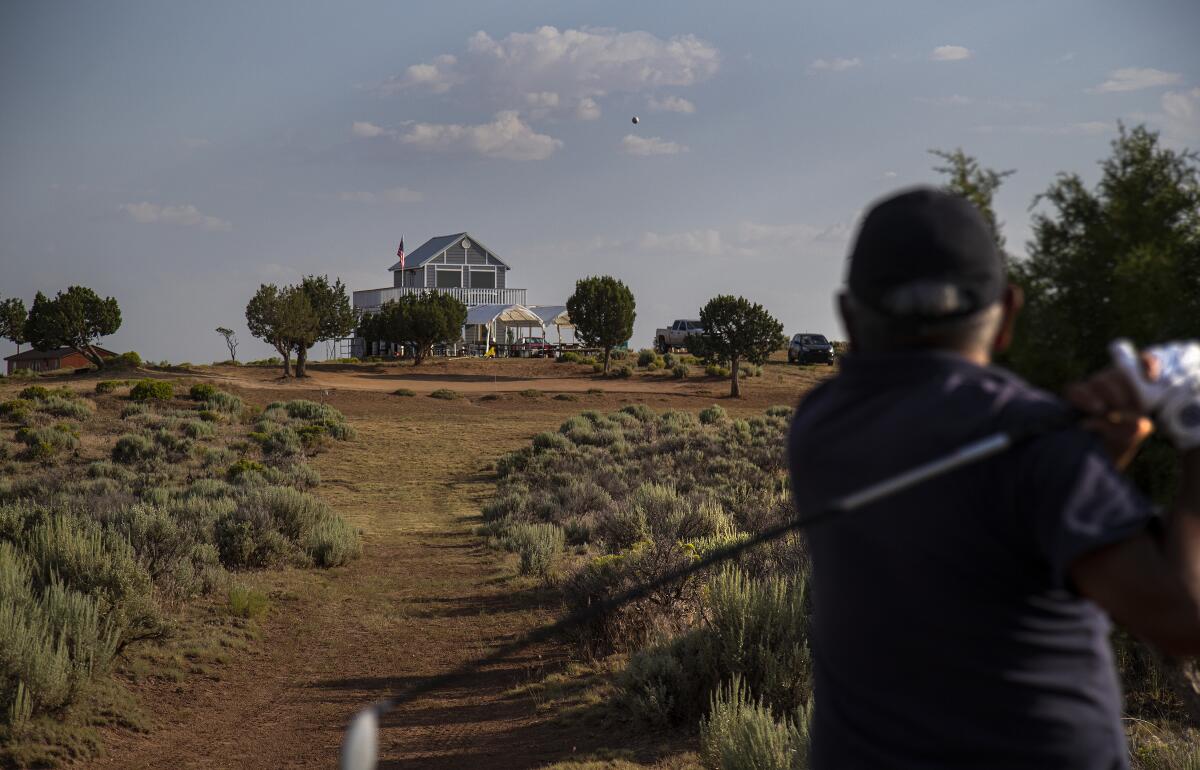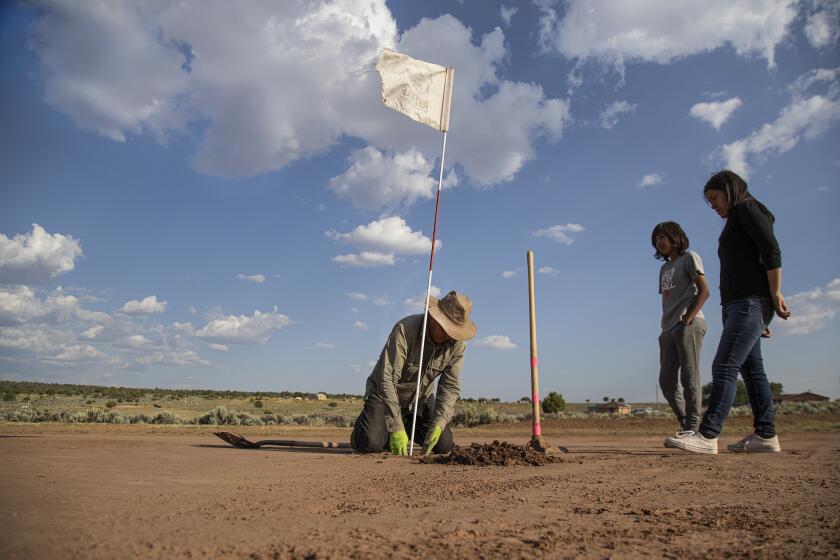Behind the Story: How I learned to love ‘rez golf’

- Share via
STEAMBOAT, Ariz. — I grew up in Warren, Ohio, a blue-collar town of blast furnaces, Friday night fish fries at St. Demetrios Greek Orthodox Church and serious high school football. I never played golf, watched golf or found golf remotely interesting. The winner gets the lowest score? C’mon.
Rich people played golf, not guys like me.
But while doing a story on the Navajo reservation, I heard tales of another kind of golf -- rez golf. Players swung used clubs, the holes were buried cups and any sign of wealth or privilege very much absent. Now I was interested.
I called up Donald Benally, co-creator of Wagon Trail to Lonesome Pine golf course on the reservation in Steamboat, Ariz. He invited me down for their annual tournament.
Column One
Column One is a showcase for compelling storytelling from the Los Angeles Times.
As a reporter, I like to be a wallflower, to hover on the fringes so I can drink in the scene, not become the center of attention. As I approached the course around 5 a.m., I saw a big sign announcing the tournament and one below that read “WELCOME Los Angeles Times.” Cover blown.
Still, it was nice to be welcomed. Trust me, it doesn’t happen much.
I met the friendly, soft-spoken Benally and we walked the nine-hole course before dawn. His father was a medicine man and he was well-versed in the spiritual and healing properties of the plants dotting the course. He occasionally popped sage leaves into his mouth. They were bitter yet oddly refreshing.
I expected the course to be rough, just not this rough. Greens? Forget it. In this austere, arid world, brown was the coin of the realm. Rez golf requires, as much as possible, that things remain in a state of nature. Don’t fence it off, mow it, level it and, above all, don’t cut it down. True, crews had cleared some land to create fairways and the putting areas, but the rest was left alone.
A Native American version of golf is gaining popularity on the Navajo Nation reservation, where duffers play on ‘browns,’ not greens.
Sagebrush, a source of traditional medicine, was not to be touched. Neither were the cedars and pinyon pines. Players yielded to grazing animals. In some ways, it captured the Navajo concept of Hozho, balance and harmony in all things.
I tagged along with different groups of golfers all day. They were a good-natured bunch, nearly all Navajo, drawn here to play under their ancestral sky.
I ducked as cries of `”Fore!” rang out. One guy inexplicably yelled, “`Sagebrush!” I ducked again.
Some were experienced golfers with crisp outfits and gleaming drivers. Others lugged around old bags, stuffed with clubs bought for a few bucks at Goodwill.
At times my lack of golf knowledge was painful. A 15-year-old kid approached me. He was beaming.
“I got a birdie,” he announced.
“That’s great,” I said. “Congratulations!”
“It was the first time I ever played!” he said.
As he bounced off, feet barely touching the earth, I picked up my phone and typed “popular golfing terms” into Google.
Up came birdie, bogey, mulligan. Apparently, a birdie is one under par. I typed, ` “What is under par?” The expected number of shots it takes to get the ball into the hole. And so it went.
As I watched the players revel in the game, my perceptions began to change. This was not the effete crowd I tended to associate with golf. Quite the opposite. The poverty rate on the Navajo Nation approaches 38%. If they could embrace the sport, maybe I could too. Or at least putt-putt.
I occasionally retreated under the tarp near the clubhouse where family members sat, watched the game and listened to country music. I found that quite a few had created their own golf courses at home.
Marlene Francis and her husband, Terry, built a seven-hole course behind their house.
“We were inspired by what they did here,” she said. “We dragged a metal railroad tie behind a truck to flatten out the land. We were thinking of doing a series of tournaments in the future.”
The game ended about 6:30 p.m. After the winners were announced, I tracked down Benally. He was standing with his family. This was clearly a good day. A hundred golfers had shown up — a new record. He pronounced it all “super, super awesome.”
I’ve done lots of stories on reservations but none like this. I’ve written about crime, addiction, the loss of ancestral languages and, earlier this year, profiled a sheep herder trying to maintain her ancient way of life. The Navajos let me into their world, showed me a side of themselves I didn’t know, and for that I felt pretty awesome myself.
Kelly is a special correspondent.
More to Read
Sign up for Essential California
The most important California stories and recommendations in your inbox every morning.
You may occasionally receive promotional content from the Los Angeles Times.









